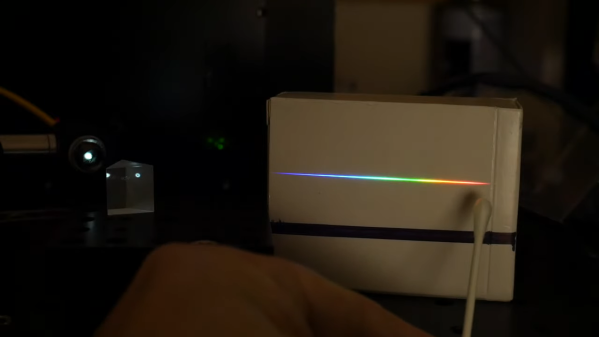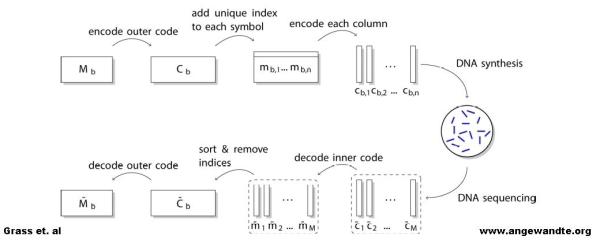Lasers are known for the monochromatic nature of their light, so much so that you might never have thought there could be such a thing as a white laser. But in the weird world of physics, a lot of things that seem impossible aren’t really, as demonstrated by this dirt-cheap supercontinuum laser.
Of course, we’re not experts on lasers, and certainly not on non-linear optics, so we’ll rely on [Les Wright]’s video below to explain what’s going on here. Basically, a “supercontinuum” is just the conversion of a monochromatic source to a broader spectral bandwidth. It’s a non-linear optical process that’s usually accomplished with expensive bits of kit, like photonic crystal fibers, which are optical fibers with an array of tiny air-filled holes running down their lengths. Blast a high-intensity monochromatic laser down one end, and white light comes out the other end.
Such fibers are obviously fantastically expensive, so [Les] looked back in the literature and found that a simple silica glass single-mode fiber could be used to produce a supercontinuum. As luck would have it, he had been experimenting with telecom fibers recently, so along with a nitrogen laser he recovered from a Dumpster, he had pretty much everything he needed. The final setup uses the UV laser to pump a stilbene dye laser, which shoots a powerful pulse of 426 nanometer light into about 200 meters of fiber, and produces a gorgeous supercontinuum containing light from 430 nm to 670 nm — pretty much the entire visible spectrum.
It’s great to see projects like this that leverage low-cost, easy-to-source equipment to explore esoteric physics concepts.













